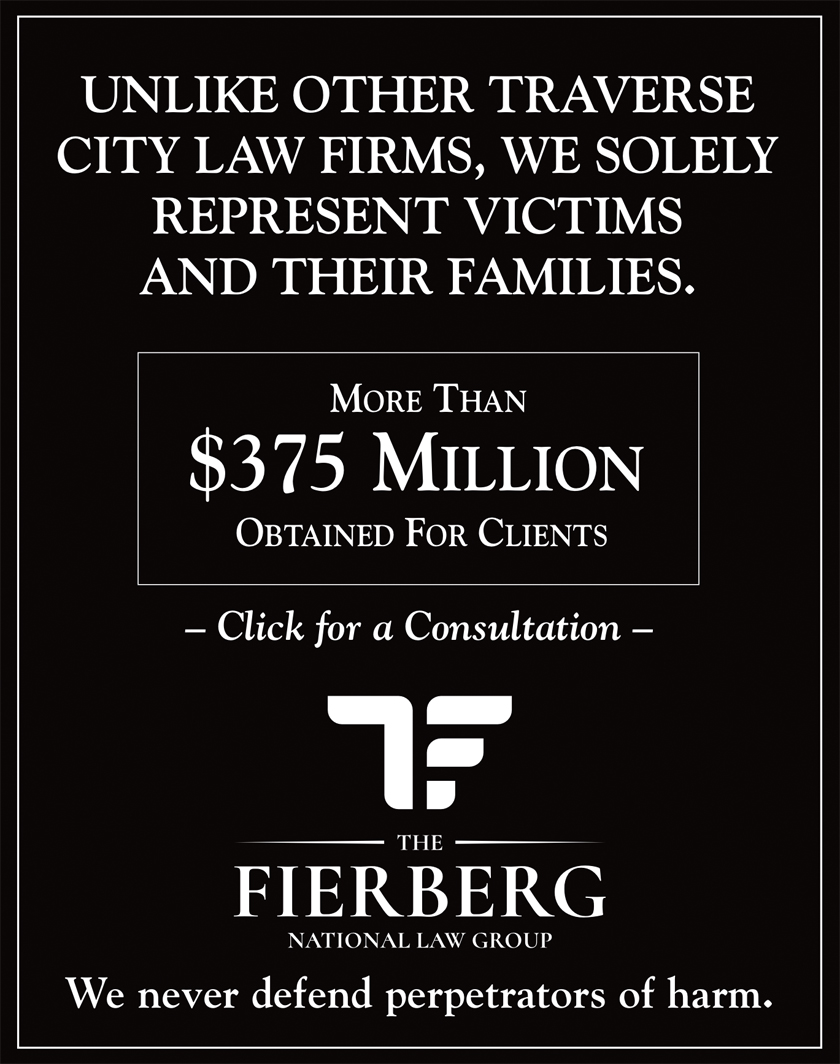
Dogs On The Loose: Animal Control's Workload No Treat
By Craig Manning | Nov. 28, 2020
Nationwide, pet adoption numbers have surged since COVID-19 first upended day-to-day life earlier this year. But while more dogs and cats finding homes is a positive shift, it’s also created unintended consequences for local animal control professionals. According to Jaime Croel, animal control supervisor with the Grand Traverse County Health Department, more pet adoptions has meant more loose dogs, more leash law violations, and higher intake rates for the department.
“We're seeing more running-at-large cases, where people are just taking their dogs out and they’re getting loose,” Croel tells The Ticker. “More people that haven't had dogs in the past have them now, because they wanted that pandemic companion. And the training opportunities haven't really been available because classes are limited right now. So people are trying to do what they can, but ultimately, more dogs are getting loose, and we're seeing that more people are trying to walk them off leash when that's not encouraged.”
While Animal Control will sometimes help stray cats or deal with issues regarding livestock, Croel says stray or loose dogs are and always have been the “primary” focus of the department. Michigan has strict laws in place regarding dog ownership, including a requirement for dogs to be licensed within six months of adoption and a more than 100-year-old law that mandates dogs be on leash when not on their property.
“What we have here in the state of Michigan is a running-at-large law,” Croel explains. “That basically means that if a dog is off of its property, it needs to be on some type of a leash. When they're on their property, they can be loose. But that doesn't apply to community properties of, say, condos and apartment associations. It's got to be your own property. And then once [dogs] come off their property, they need to be accompanied by an owner.”
Under the technical letter of the law, Croel says a dog is effectively running at large the moment it crosses the owner’s property line without a leash. Generally, Animal Control will only get involved in these situations if they are notified that a dog is loose. In those cases, though, owners can face a range of consequences for violating leash laws – from warnings and minor fees to forfeiture of their dogs.
Part of the challenge for Animal Control can simply be finding the owner when a loose dog is captured and brought in. Through a partnership with the Cherryland Humane Society, Animal Control has the capacity to house up to 12 dogs caught running at large. In an average day, Croel says it’s not unusual for five running-at-large dogs to come into the Humane Society, which means it’s important for Animal Control to turn those kennels over quickly to avoid problems with capacity. That process includes checking the dog’s collar for identification information, scanning for a microchip that might lead back to the owner, following up on any and all tips provided by the person reported the lost animal, and using social media to share photos of the dog and spread the word. Several local lost animal groups and pages on Facebook help amplify these signals. What Croel says many owners don’t understand, though, is that an animal coming into Animal Control starts a ticking clock.
“All dogs that have no identification go on a four-day hold,” she says. “If they have identification, or anything that can lead us back to a possible owner, then they're going to go on a seven-day hold. And that's business days. If we aren’t able to find the owner in that amount of time, then the animal gets transferred over to the Humane Society for adoption. [The dog] is not reclaimable at that point in time.”
There’s also a financial component to the process. Any time Animal Control gets called to pick up a dog or has to bring one into the Humane Society, there is a pickup and processing fee of $50. An additional $20 rate is added for each day that the Humane Society has to provide kennel space, food, and care for the animal. As for citations, Croel says Animal Control will typically issue warnings the first time or two that an animal has to be picked up. The department also provides these owners tips for dog training, and leash etiquette to avoid future problems. When repeat offenses do occur, those owners are more likely to be ticketed for violating running-at-large laws; owners can also be cited if they have not properly licensed their dogs. While these fees are set by the court and can vary from one case to another, Croel says they typically land around $120 and $75, respectively. Repeat offenses would also increase the risk of an owner having their dog taken away.
The higher caseload of running-at-large dogs comes at the end of what has already been an unusually challenging year for Animal Control. In the spring, the department tracked an increase in dog bites and dog-versus-dog cases, which Croel credits in part to dogs sensing how on edge their humans were at the time.
“People don't think about how their dog perceives their emotions,” she notes. “So if you’re out with your dog and you're kind of scared to see another person and you don't want to get close to them because of the pandemic situation, your dog feels that too. They tend to be a little more alert, and so that changes some attitudes. At the beginning, we were seeing more of that.”
Those issues have somewhat abated, but Animal Control has also had to take on more responsibility as the rest of the Health Department has become busier with the rising presence of COVID-19; where Animal Control would typically rely on the Health Department’s communicable disease team to handle dog bite cases, the pandemic situation has forced Animal Control to take on those cases itself. The extra work has Croel calling on local dog owners to be more cognizant of where their dogs are at all times and more aware of Michigan leash laws.
“There’s no limit on how long the leash can be,” Croel says. “They make the extendable leashes and stuff like that. So you can definitely put something on your dog to keep them safe, but still give them that room to run.”
Comment






